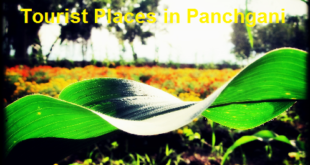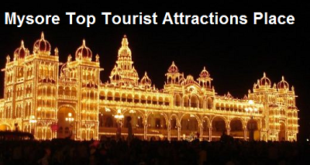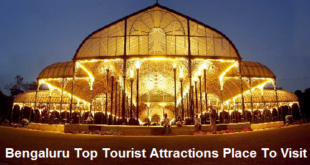Mandu or Mandavgad (M.P.) Top Attraction Places to Visit. There is dearth of ancient and popular tourist attractions India. One among these is the small place that has been making the headlines in the recent times. The name of the place is Mandu. It is also popularly known as Mandavgarh. The rich culture and heritage of the place has been attracting tourists from far and near. If you are traveling to Madhya Pradesh, which is called the “heart of India” make time to visit the small town of Mandu and enlighten yourself about the past of this amazing area.
Mandu is particularly known to be one of the ancient sites in the country that stands amongst ruins now. It is situated close to the district of Dhar. The area is set amidst the region of Malwa. The entire area is located in the western part of the state of Madhya Pradesh.
History of Mandu
Historical records suggest that during the early 6th century, the town was Mandu was flourishing under the then rulers. This information has been deciphered from an ancient inscription. The text was found at Talanpur. The text also says that the town of Mandu was actually founded by Chandra Simha. He was a wealthy merchant. The translation of the word “mandu” in Prakrit stands for “Mandapa Durga.”
During the start of the 10th and the 11th century, the name of the town came into the limelight. Though the area was under smaller kings, the area was taken to the heights of prosperity under the reign of the kings of the Paramaras dynasty. This rocky area is nestled on the top of the rugged Vindhya Range. The average elevation of the town is 633 meters. It spans over an area of 13 kilometers. In all the inscription of the Parmaras, the mention of Mandu has been found.

In the year 1305, the entire Malwa area slipped into the hands of the ruler of Delhi, Sultan Alauddin Khilji. This was short-lived and the town achieved heights of prosperity during Ghuri dynasty, which started from 1401. The place has seen the rule of many Afgan rulers as well. Their rule influenced the area’s culture, heritage and architecture. This is why you will find many monuments, which were constructed according the patterns of the Afgan architectural patterns.
After lots of ups and downs, the area finally came into the hands of the Mughal rulers. This marked a new beginning in the history of Mandu. Under the Mughal rule, a new wave of architectural wonders swept the shores of the town. With time, the prosperity of the area dwindled and this led to the fall of the strong rule.
Best time to visit in Mandu
As the area is located in the central part of the country, it has a tropic weather. The tropical climate is marked by very hot summers and very cold winters. The area gets sufficient rainfall for sustaining the year-round flow of water in the many streams. As a high percentage of the rural people are farmers, the area remains dependent on the monsoon rains for farming. The Mandu area experiences an average temperature that hovers around 25 degree Celsius. The month of February is considered to be the driest span and the area receives most of the rainfall in the month of July. The average rainfall in the area measures 289 mm. According to the weather reports, collected over the last 20 years, climatologists have deduced that the month of May is the hottest. The temperature during this time of the year reaches 32.1 °C and the coldest month is January, with the mercury dropping to 18.5 °C. Thus, it is best to visit the place post the monsoon months. The temperature of Mandu during the months of August to late November will be pleasant. So, it is the right time for tourists to flock to this ruinted city.
How to get to Mandu by Road, Bus and Flight
The location of the town is placed in such a way that people from all parts of the country will be able to reach the place by ease. To reach the town by plane, you will have to reach the Pune airport. This airport is placed at a distance of only 98 km from Mandu. From the airport complex, you can get taxies or other forms of transport. The average cost of booking an air ticket is Rs.7000 (approx). To scale the distance by road, you will have to book a seat in the air-conditioned or luxury buses. The tickets will cost you anything between Rs. 350 to Rs. 500. If you want to reach the destination by train then you will have to get down at the nearest junction, Ratlam. It is set at a distance of 124 km from the town of Mandu. The train ticket will cost you around Rs. 700, depending on the distance you cover. From the station, you will have to book a taxi, bus or private cab.
List of Top Tourist Places to Visit in Mandu
Be it the ancient forts or the beauty of nature, the tourist will be spoilt for options when visiting Mandu. One trip will not be enough to take in the real feel of what the area has to offer. Thus, you must have some time at hand so that you do not go back with an incomplete feel. The following are some of the important places, which one must visit to understand the rich background of the place:
- Roopmati’s Pavilion
Among the various attractions and ancient monuments, which the dilapidated city of Mandu flaunts, the Rami Roopmati’s Pavilion is the most sought after. According to the historical records, Roopmati was known all over the area for her sweet voice. Kinds from far and near used to come to her court to enjoy her beautiful and engaging singing. She was a Hindu by religion. It is also said that she was very beautiful and charismatic. This was the main reason as to why an influential ruler like Baz Bahadur fell in love with her. The two were madly in love with each other and Baz Bahadur did anything at his disposal to make the love of her life happy.
The construction of the Roopmati’s Pavilion was done on the picturesque banks of the river Narmada. When you stand on the pavilion complex, you will be able to see the other important monument, built in the close vicinity. The name of the monument is the Baz Bahadur Mahal. One will also be able to take a look at the vast stretches of Nimar plains. According to records, the construction of this amazing monument was actually done as a check post for stationing the soldiers. But Rani Roopmati had an intense fascination for the place. So, Baz Bahadur spent a huge sum of money on the beautification of the monument and gifted it to her.
The presence of the Mughal influence on the architecture is clearly visible. The later emperors of the Mughal bloodline also did their part in enhancing the beauty of the structure. The arches and the elaborate doorways still tell the tale of the love that the two shared.
- Jahaz Mahal
The popular tourist destination of Jahaz Mahal is visited by the tourists who want to marvel at the architecture of the bygone era. The monument was constructed between the two popular lakes named Munj and Kapur. Due to the presence of the two lakes, place will give you a feel as if you are on a ship. This building has two levels and the construction was completed under the reign of many rulers. The complex has a rectangular shape. Most walls of the palace were decorated with the help of colorful pebbles. According to the historical records, the palace was occupied by the queens and their female retainers. The kings also had a fully functional harem in the palace complex. The designing of the monument has been done in such a manner that the blowing winds from the west would keep it pleasant and cool during the hot summers.
- Nilkanth Mahal
Located in the vicinity of the Nilkanth Shrine, this monument has been named after the temple. According to the historical records, this Hindu temple was erected by the orders of one of Akbar’s governors. It is said that the wife of this governor was the follower of Hindu religion. The main deity of the temple is Lord Shiva. This palace has now been transformed into a temple. The prayer hall in the building has images of the Hindu God and his signature weapon, the trident. The encryptions will give you a clear picture about the state of events in the area when it was under the reign of the Mughal emperors.
- Bagh Caves
Before the area passed under the rule of the Mughals, the area had a high percentage of Buddhist population. This can be deduced due to the presence of the Bagh Caves. Historians and archeologists have studied the area and found that the actual number of caves were nine. Only five of these have been able to stand the test of time. All these caves have been dedicated to the Buddhist religion. The most interesting fact about these caves is they were made by men. People toiled for many years and skillfully carved out these outstanding caves from the rocky Vidhya Ranges.
These structures contain amazing paintings. If you see these paintings, you will have to applaud the skill and creativity of the well-known painters of the ancient times. Rang Mahal is the name of 4th cave. The literal translation of the term is the “palace of colors” and it will give you a glimpse at the amazing wall paintings. These amazing caves and the paintings are a proof of the fact that this area was culturally very rich in the ancient times.
- Hoshang Shah’s Tomb
Due to the fact that the area was under a lot of rulers, it is only evident that the ancient monuments will reflect the patterns. One monument that has been making headlines for the Afgan pattern of architecture is the Hoshang Shah’s Tomb. It is said that this happens to be the very first building in the country that was entirely constructed out of milk white marble slabs. Historians also suggest that Saha jahan got the inspiration of making Taj Mahal after seeing this monument. The complex is huge and the design of the structure proves that a lot of planning went into its construction. Its casketed sarcophagus is the main attraction for all tourists. The tomb was used for burying people of royal origin. The architectural pattern of the monument reflects Indo-Islamic patterns.
- Baz Bahadur’s Palace
If you brush up on the history of Mandu, then you will come to know that Baz Bahadur was the last sovereign ruler of the area. He had a love for everything beautiful and artistic. The splendid Baz Bahadur’s Palace was built for the king. The amazing palace has many parts and one look at the awe-inspiring size of the complex will give the tourists an idea about his influence over the area.
Apart from the Islamic patterns of construction, you will be able to notice that the palace has also been influenced by the Rajasthani architectural patterns. The palace complex has a pool in the middle and the steps running down are similar to the ones you will see in a rajasthani bawri.
- Jain Temple
Apart from Islam, the area also boasts of many monuments, which are dedicated to Jain religion. The Jain Temple, located in the heart of the city is an outstanding example of this. A believer of this religion or not, you will not be able to stop yourself from admiring the beauty of the temple. The temple was constructed in the recent times. The entire complex has been made of white marble. Inside the shrine, you will be able to see the statues of all the Tirthankaras of the religion. The statues are partially made of silver and gold, while the most part is carved out of marble. The ambience of the temple is calm and pristine. If you want to get in touch with your spiritual side then this is the place to visit.
- Jami Masjid
Have you seen the Omayyed Mosque that is located in the city of Damascus? If the answer is no then you might want to see the Jami Masjid. This masjid in the heart of Mandu will give you a clear idea about the Omayyed Mosque. The reason behind this is the man behind the construction of this mosque, Hoshang Shah, was inspired by the grandness and beauty of the Omayyed Mosque. The entire mosque has been constructed out of red stones, which gleam in the afternoon sun. This mosque is so huge that the tourists will be able to see the towers from far.
Hoshang Shah started the construction of the mosque but did not live to see its completion. Historical records say that it took around 49 years for the workers to finish the entire construction. The masjid was finished under the reign of Mohammed Khilji. The architectural patterns closely resemble the Afgan style. The overall simplicity will command the attention of all tourists. The Jami Masjid is one of the biggest monuments in the country that highlight this pattern of architecture.
- Taveli Mahal and Ashrafi Mahal
The best way of gathering information about a place is by unraveling the mysteries of its past. This can be done by taking a trip to the various museums. One such place, in Mandu happens to be the Taveli Mahal. This monument was done by the Mughal emperors and was considered as one of the architectural gems of the area. Now, the building has been placed under the responsibility of the Survey of India. When you visit the place, you will see many artifacts, which were used during the ancient days.
On the other hand, the Ashrafi Mahal was constructed with the primary purpose of imparting education. This monument was constructed under the patronage of Mahmud Shah Khilji. Later on, he changed his mind and made it into a palace for his personal usage. There were many flaws in the construction and the designs. This caused the monument to breakdown. No attempts were made to reinstate its lost glory and now, you will only see some parts of this once beautiful monument, rising above the heap of rubble.
- Hammam and Champa Baoli
A widely built stride well, it was particularly enlivened from the popular Turkish pattern of architecture in the traditional bath houses, this monument was called Champa Baoli in light of the fact that the fragrance of the water was accepted to look just like beautiful Champa flowers.
This development is the exemplification of design amid the Mughal times. The vaulted rooms known as Taikhanas were so very much associated with the baoli that notwithstanding amid terribly hot temperatures, these rooms were continually kept cool. This place is an unquestionable requirement visit for vacationers since it is such engineering wonders that help us to remember our excellent authentic roots.
Apart from these places, tourists also make it a point to visit the Hindola Mahal. The construction of this monument too was stared during the reign of the Mughal rulers. One of the main aspects of the mahal happens to be its slanting ramparts. The other name of the monument is Swing Palace. Due to the sloping ramparts, it gave the viewers an impression as if the palace was experiencing a to-and-fro motion. This palace was mainly constructed to entertain the Mughal kings and high placed courtiers during the rainy season.
Though Mandu is a city that has been left unattained for a long time, the unique charm of the city has been attracting history lovers since the dawn of modern times. Take some time out from your busy schedule and listen to the amazing tales that the time has to tell. Trip to the city will bring a lot of relaxation to the mind and body. Traveling to this majestic town will renew your energy levels by leaps and bounces.
Some Other Articles of Tourist Attractions:


